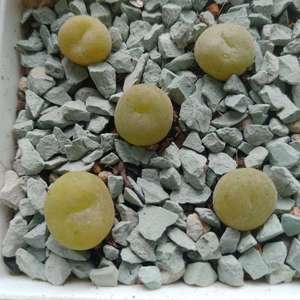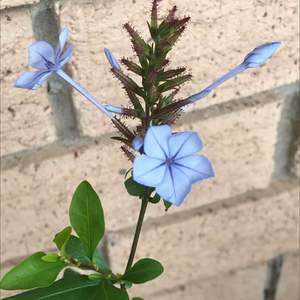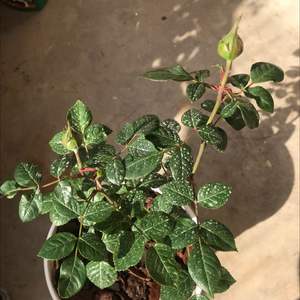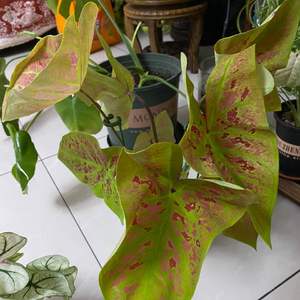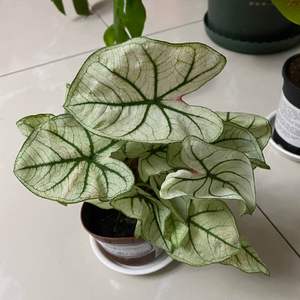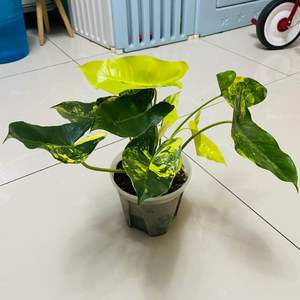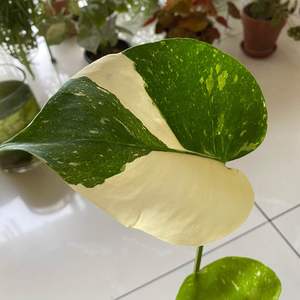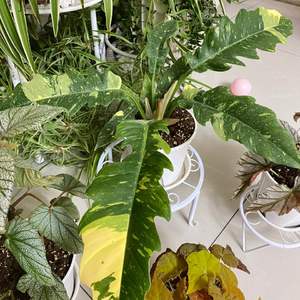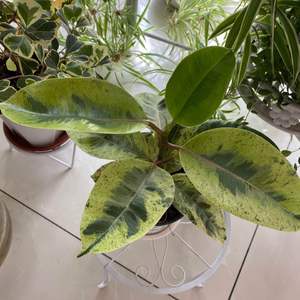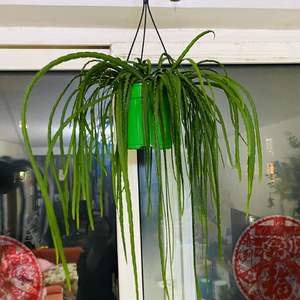文章
atastybellpepper
2022年07月17日

You should really be able to grow plants even if you reside in a small flat. In addition to common houseplants, an apartment garden may support a variety of herbs, fruits, and vegetables. When you're just learning how to plant, start with a few small pots. Considerations like sunlight exposure and the overall weight of your containers must be made. Here's how to create a beautiful apartment garden.
1. Soil
Water, oxygen, and nutrients are all provided for plants by their soil. You can't use regular garden soil since it would clump in pots, restricting access to oxygen and preventing water from flowing through. This is because your apartment garden will probably incorporate containers. Consequently, a potting mix that drains effectively is required. Potting mix is airy and light, effectively moving oxygen and water to maintain healthy roots. You won't need to be concerned about bringing illnesses or bugs into your flat since it is reasonably sanitary.
2. Water
Container plants need a lot of water, often many times each day. So choose a location for your container garden that is close to a water source. Carrying watering cans can get tiresome, particularly if you need to water many containers at once. If your arrangement allows it, think about getting a hose that can be connected to a sink faucet. When you need it, it is convenient, and when you don't, it coils up.
3. Sunlight
The majority of blooming and fruiting plants need a full day of sunlight. This translates to six to eight hours of direct sunlight each day. Especially in a city where towering buildings might obstruct the sun for at least part of the day, this can be difficult to find in an apartment. The greatest chances of getting full sun are on balconies and roofs. If you're planting on a windowsill, you have two options: either choose plants that don't need as much light, like certain herbs and salad greens, or add a grow light to simulate the sun's rays.
4. Humidity
When the heat is on, you may need to add some additional humidity if you are growing your plants inside on a ledge. You may either put the plants on a tray of water or spritz them with a light mist to aid.
5. Wind
Your plant pots may need additional protection if your plants will be exposed to strong winds, particularly if they will be on a rooftop or balcony. Wind has the power to rip apart foliage and topple pots. So make a wind barrier available, such a screen or railing. Alternately, make sure your pots are large and substantial enough to secure the plants.
6. Weight
Although soil-filled containers are already heavy, their weight might increase by three times when they are saturated with water. Make sure the position of your apartment's garden can support the weight. It will be necessary to fasten window boxes to the windowsill. Additionally, find out if there are any weight limitations from your landlord or the building board if you're gardening on a balcony or rooftop.

1. Herbs: Many herbs perform well in containers, but they won't become as big and bushy as they would if they were planted in the ground outside. Additionally, if you harvest regularly, you may need to replace your plants. But having access to fresh herbs while cooking is amazing. Mint, chives, parsley, lavender, basil, thyme, and other herbs are some of the best plants for apartment gardening.
lettuce greens Favorite salad ingredients like lettuce, spinach, and arugula are shallow-rooted, quickly growing plants. If they have enough water, they aren't too picky about their growth circumstances.
2. Tomatoes: Although tomato plants may become bulky and heavy, they thrive in containers. They will thrive in a container with a minimum diameter of 14 inches, however bigger is preferable. The patio varieties may be grown in a hanging basket. Make careful you choose a determinate or dwarf tomato variety.
3. Chili peppers: If you like spice, hot pepper plants do extremely well in containers and may produce fruit all year long. Sweet peppers may also be grown in containers, although they normally don't perform as well as hot peppers.
4. Meyer lemons: Dwarf citrus trees are among the simplest fruits to cultivate in a container. If they get six to eight hours of direct sunlight each day combined with some humidity, meyer lemons thrive inside. Lemon trees emit a sticky sap, so place something beneath the pot to protect your floors and furnishings.
5. Strawberry: A window box filled with strawberries is both aesthetically pleasing and appetizing. For the greatest fruit, strawberry plants typically need at least six hours of sunlight every day and continuously damp (but not soggy) soil.
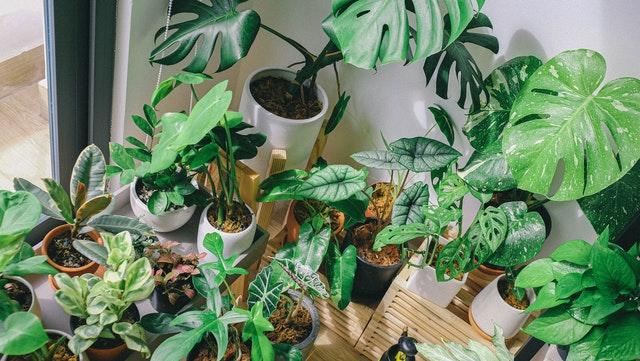
Watering is by far the most crucial gardening chore. Even if rain falls on your garden, there most likely won't be enough water. As your plant develops, the dirt in containers dries up rapidly. Use your finger to probe the dirt about an inch or so below the surface. It needs watering if it seems dry.
1. Feeding: In accordance with each plant's specific growth needs, you must feed your plants on a regular basis. The simplest technique is often to apply a water-soluble fertilizer when you water. Inspect your potting mix to see whether it contains fertilizer; if it does, you won't need to feed your plants as often.
2. Problems: No matter where you cultivate plants, pests and illnesses will eventually find them, and there are no natural predators for insects inside. Every time you water or harvest your plants, check them for issues. Move a plant away from the other plants until the issue is fixed if you see evidence of pests or illnesses, such as discoloration or holes in the leaves.
3. Harvesting: Find out when your particular plants are ready to be picked, and then don't put off enjoying the rewards of your toil. In certain circumstances, harvesting encourages the plant to grow more food that you can collect.
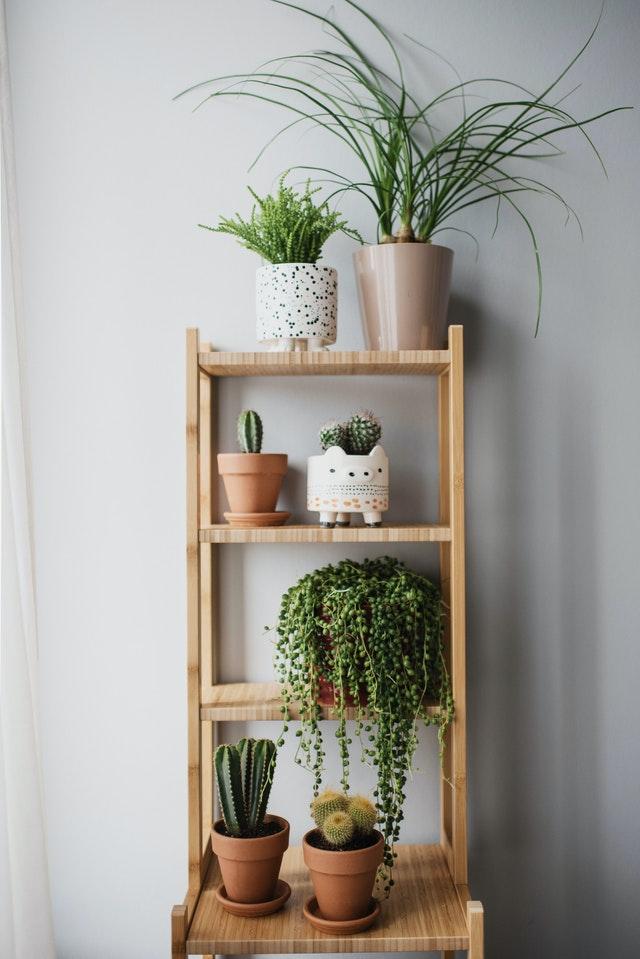
There isn't usually a ton of room available in apartments for gardening. However, there will inevitably be a sunny spot where you may exercise your green thumb and sample the results of your effort.
Apartment Plant Growing Instructions
All plants have certain growth conditions that must be fulfilled, while some are more resilient and forgiving to novice gardeners than others. When selecting plants for your apartment garden, keep the following factors in mind:1. Soil
Water, oxygen, and nutrients are all provided for plants by their soil. You can't use regular garden soil since it would clump in pots, restricting access to oxygen and preventing water from flowing through. This is because your apartment garden will probably incorporate containers. Consequently, a potting mix that drains effectively is required. Potting mix is airy and light, effectively moving oxygen and water to maintain healthy roots. You won't need to be concerned about bringing illnesses or bugs into your flat since it is reasonably sanitary.
2. Water
Container plants need a lot of water, often many times each day. So choose a location for your container garden that is close to a water source. Carrying watering cans can get tiresome, particularly if you need to water many containers at once. If your arrangement allows it, think about getting a hose that can be connected to a sink faucet. When you need it, it is convenient, and when you don't, it coils up.
3. Sunlight
The majority of blooming and fruiting plants need a full day of sunlight. This translates to six to eight hours of direct sunlight each day. Especially in a city where towering buildings might obstruct the sun for at least part of the day, this can be difficult to find in an apartment. The greatest chances of getting full sun are on balconies and roofs. If you're planting on a windowsill, you have two options: either choose plants that don't need as much light, like certain herbs and salad greens, or add a grow light to simulate the sun's rays.
4. Humidity
When the heat is on, you may need to add some additional humidity if you are growing your plants inside on a ledge. You may either put the plants on a tray of water or spritz them with a light mist to aid.
5. Wind
Your plant pots may need additional protection if your plants will be exposed to strong winds, particularly if they will be on a rooftop or balcony. Wind has the power to rip apart foliage and topple pots. So make a wind barrier available, such a screen or railing. Alternately, make sure your pots are large and substantial enough to secure the plants.
6. Weight
Although soil-filled containers are already heavy, their weight might increase by three times when they are saturated with water. Make sure the position of your apartment's garden can support the weight. It will be necessary to fasten window boxes to the windowsill. Additionally, find out if there are any weight limitations from your landlord or the building board if you're gardening on a balcony or rooftop.

Suitable Plants for Apartments
To a certain degree, almost every plant may be grown in a container. A full-sized apple tree, for instance, would not be feasible, but there are thin columnar types that can fit in a one-square-foot section of your balcony. After considering the foods you love eating, choose a few different plant varieties to try out. You may begin with seeds, which are more diverse and less expensive. However, young nursery plants will help your garden get started faster.1. Herbs: Many herbs perform well in containers, but they won't become as big and bushy as they would if they were planted in the ground outside. Additionally, if you harvest regularly, you may need to replace your plants. But having access to fresh herbs while cooking is amazing. Mint, chives, parsley, lavender, basil, thyme, and other herbs are some of the best plants for apartment gardening.
lettuce greens Favorite salad ingredients like lettuce, spinach, and arugula are shallow-rooted, quickly growing plants. If they have enough water, they aren't too picky about their growth circumstances.
2. Tomatoes: Although tomato plants may become bulky and heavy, they thrive in containers. They will thrive in a container with a minimum diameter of 14 inches, however bigger is preferable. The patio varieties may be grown in a hanging basket. Make careful you choose a determinate or dwarf tomato variety.
3. Chili peppers: If you like spice, hot pepper plants do extremely well in containers and may produce fruit all year long. Sweet peppers may also be grown in containers, although they normally don't perform as well as hot peppers.
4. Meyer lemons: Dwarf citrus trees are among the simplest fruits to cultivate in a container. If they get six to eight hours of direct sunlight each day combined with some humidity, meyer lemons thrive inside. Lemon trees emit a sticky sap, so place something beneath the pot to protect your floors and furnishings.
5. Strawberry: A window box filled with strawberries is both aesthetically pleasing and appetizing. For the greatest fruit, strawberry plants typically need at least six hours of sunlight every day and continuously damp (but not soggy) soil.

Garden Care for Apartments
You may anticipate doing the following duties on a regular basis in your apartment garden:Watering is by far the most crucial gardening chore. Even if rain falls on your garden, there most likely won't be enough water. As your plant develops, the dirt in containers dries up rapidly. Use your finger to probe the dirt about an inch or so below the surface. It needs watering if it seems dry.
1. Feeding: In accordance with each plant's specific growth needs, you must feed your plants on a regular basis. The simplest technique is often to apply a water-soluble fertilizer when you water. Inspect your potting mix to see whether it contains fertilizer; if it does, you won't need to feed your plants as often.
2. Problems: No matter where you cultivate plants, pests and illnesses will eventually find them, and there are no natural predators for insects inside. Every time you water or harvest your plants, check them for issues. Move a plant away from the other plants until the issue is fixed if you see evidence of pests or illnesses, such as discoloration or holes in the leaves.
3. Harvesting: Find out when your particular plants are ready to be picked, and then don't put off enjoying the rewards of your toil. In certain circumstances, harvesting encourages the plant to grow more food that you can collect.

There isn't usually a ton of room available in apartments for gardening. However, there will inevitably be a sunny spot where you may exercise your green thumb and sample the results of your effort.
1
1
sososo:wow!I just saw this article when I was about to grow some flowers.😍
atastybellpepper:Great article
文章
atastybellpepper
2022年07月13日

Since spectators may see the whole garden in a single look, small gardens are personal settings and need careful thinking when selecting hardscape elements and plants. However, the garden's size does not imply that it lacks diversity or appeal.
Instead of using the special beauty of the available area, landscape designers all too often concentrate too much on attempting to make a tiny place seem larger. The gardeners show numerous methods for maximizing a tiny garden area by using scale to your advantage in the examples provided below.
The best course of action is simplicity.
It is recommended to keep the garden design relatively simple in a small landscape with fascinating architectural components to prevent the landscape from seeming too cluttered. In this instance, basic potted geraniums are placed along a stone wall with beautiful texture—not a decision that often wins any garden prizes. These little patches of color and foliage really enhance the scenery.
Breaking up the uniformity and introducing various shapes and textures are aged terra-cotta pots, evergreens, and succulents sprinkled throughout. An iron seat has been added to the once-simple gravel path that connected the home and garage to create a tranquil garden walk.
The vivid bloomers with a tall growth habit that this gardener has selected catch the attention and provide a more substantial screen than smaller, less vibrant plants could. As they age, the little trees next to and behind the fence make the garden seem bigger.
The first thing you notice about the home is this little square garden, and despite how unassuming it may seem, it attracts attention and smiles from onlookers. Even though it is not a large garden, it has a dominating presence.
The greatest places for garden planting spaces in the front yards of modest houses are often regions along roads and roadways.
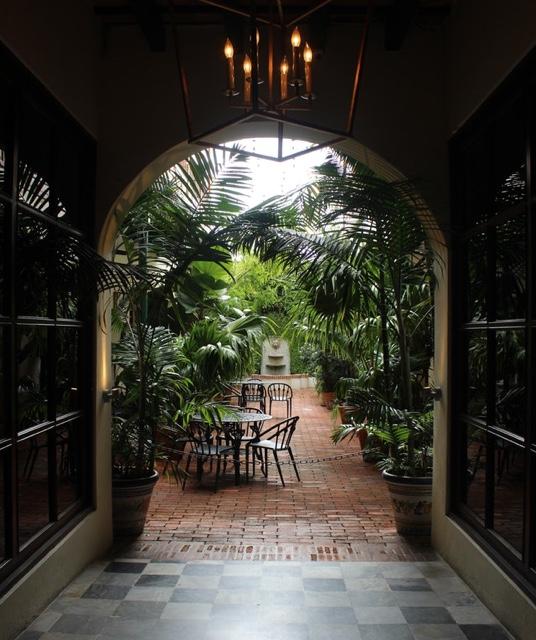
The selection of plants, including roses, clematis, and lavender nepeta, gives this garden area an immediately English air. The little garden border is set against the background of the little tree and overgrown lilac to the left, which helps to create a more cozy atmosphere. This pretty young garden seems older, more mature, and more abundant by employing rather big clusters of a select few plant kinds. The little garden is enhanced by bringing it inside since the garden bed is plainly seen via the big windows.
In this instance, the owners have planted low-maintenance blooming plants and bulbs all around their little patio. Even the roadside has a group of river birches that serve as a privacy screen. Despite the garden's recent planting, there are still enough plants for it to instantly be aesthetically pleasing. Additionally, the garden will mature gracefully thanks to the wise plant selection.
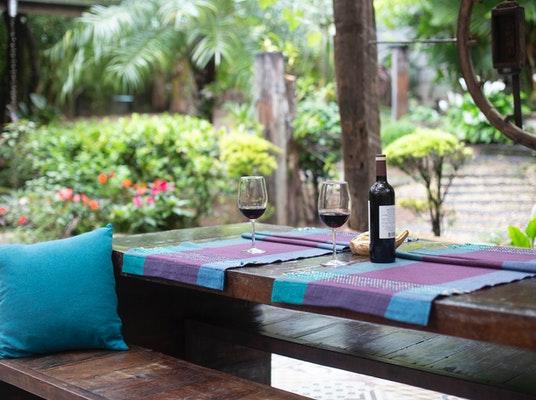
On any property with steeply sloping soil, retaining walls may be an efficient approach for flattening planting areas and reducing mowing slopes.
Utilizing a relatively limited number of bigger plants and arranging them in a pyramid shape with the biggest specimens in the middle is another strategy that may function rather well in tiny landscapes. The tendency is to jam as many plants as you can into a tiny garden, but this just makes the garden seem unnecessarily congested and pointless. Small gardens frequently benefit from less being more.
In order to ensure that there is always something in bloom, this gardener has built a garden wall with a variety of climbing clematis of varied sizes and bloom times. The fuzzy gray of the lamb's ear, along with the other plants that flow over the borders, softens the gray pavers, making it an excellent option for the patio's edge. But nothing around here needs a lot of upkeep. Although this area is small, it is lush.
In this illustration, the gardener has included raised beds with seats, a gravel walk that is simple to maintain, a sitting place for when you can't wait to enjoy the vegetables, and art nouveau-style deer fence. Sometimes something as mundane as fence may define an area more clearly than anything else. Fences may also provide a vertical dimension for climbing plants like pole beans or cucumbers.
It may be important to designate your garden as "all-vegetable" or "all-ornamental" since it might be challenging to make a small landscape satisfy all needs. A vegetable garden may, however, nevertheless be made to seem lovely by adding a few annual flowers here and there. It's important to keep in mind that many consumables have their own charm, such as the ripe lushness of tomatoes or the brilliant color of sunflowers. And as this vegetable garden's exquisite geometry demonstrates, smart design is also a kind of beauty.
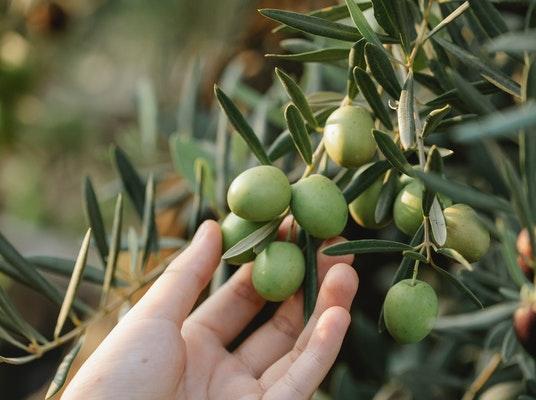
Espalier is the practice of training and trimming trees to grow in two dimensions while growing fruit and other plants flat against a wall. The walled gardens of medieval Europe were where the art initially gained popularity. In addition to using less space, leaning trees up against a sunny wall produces a comfortable microclimate. Fruit trees that normally wouldn't bear in colder climates may be made to believe they are in a warmer climate. Additionally, an espalier's open structure allows more sunlight to enter, which promotes more flowers and quicker ripening. The beauty of the trees as they glisten in the sun next to your house is a last advantage.
The most typical fruit trees utilized with this method are apples and pears. Peaches, cherries, and plums are just a few examples of stone fruits that may be trained, however the pruning timetable will vary. In this illustration, the trees are situated in a border that is just about a foot broad.
The greatest places for garden planting spaces in the front yards of modest houses are often regions along roads and roadways.
Instead of using the special beauty of the available area, landscape designers all too often concentrate too much on attempting to make a tiny place seem larger. The gardeners show numerous methods for maximizing a tiny garden area by using scale to your advantage in the examples provided below.
The best course of action is simplicity.
It is recommended to keep the garden design relatively simple in a small landscape with fascinating architectural components to prevent the landscape from seeming too cluttered. In this instance, basic potted geraniums are placed along a stone wall with beautiful texture—not a decision that often wins any garden prizes. These little patches of color and foliage really enhance the scenery.
Breaking up the uniformity and introducing various shapes and textures are aged terra-cotta pots, evergreens, and succulents sprinkled throughout. An iron seat has been added to the once-simple gravel path that connected the home and garage to create a tranquil garden walk.
1. Adapt the Garden to a Goal
The more detailed you need to be about making sure your garden serves a certain function, the smaller it is. In order to build an effective and aesthetically pleasing screen to block sound and vision from the city street, a homeowner with a relatively tiny backyard but significant exposure along a busy street has combined garden plants with portions of conventional fence. Additionally, extra garden space is created by incorporating the planting bed within the fence treatment.The vivid bloomers with a tall growth habit that this gardener has selected catch the attention and provide a more substantial screen than smaller, less vibrant plants could. As they age, the little trees next to and behind the fence make the garden seem bigger.
2. Start Small and Individually
In this illustration, a little garden that is completely in proportion with the house itself is included into the driveway retaining wall to enliven a simple home. A personal touch is provided by a mass of rudbeckia, a few coneflowers, a morning glory vine clinging to the lamp post, and some comical figurines. The other yew-framed homes flanking the street might easily obscure this relatively little front yard. But every time they enter their driveway, these homeowners are greeted with a cheery splash of color. Long-blooming perennials are the secret to maintaining interest in a tiny garden like this one.The first thing you notice about the home is this little square garden, and despite how unassuming it may seem, it attracts attention and smiles from onlookers. Even though it is not a large garden, it has a dominating presence.
3. Think about the Welcome
In this instance as well, the gardener turned the area next to the driveway into a welcome-home garden. Coneflower, sedum, daylilies, and flowering shrubs are among the hardy, low-maintenance plants. But in this area, the area has grown and seems to be becoming even larger as it circles to the side of the road. In American front yards, free-flowing gardens are uncommon, yet in this instance, they don't look out of place.The greatest places for garden planting spaces in the front yards of modest houses are often regions along roads and roadways.

4. Combined Garden and House
If your land is modest, you could believe that you lack the room for a border of voluminous flowers. A sharp eye, though, is more valuable than a double-wide lot. A beautiful architectural feature of this home are the large windows on the gable side. Small gardens must use every resource at their disposal, in this example, the home's appealing architecture.The selection of plants, including roses, clematis, and lavender nepeta, gives this garden area an immediately English air. The little garden border is set against the background of the little tree and overgrown lilac to the left, which helps to create a more cozy atmosphere. This pretty young garden seems older, more mature, and more abundant by employing rather big clusters of a select few plant kinds. The little garden is enhanced by bringing it inside since the garden bed is plainly seen via the big windows.
5. Add Contemporary Comforts
For older baby boomers who no longer want to bend and move heavy objects required for landscape upkeep as well as for young professionals who just don't have the time, townhouse living has a lot to offer in terms of decreased lawn and garden maintenance. However, just because you live in a townhouse or apartment doesn't mean you have to submit to a backyard dominated by a patio made of concrete.In this instance, the owners have planted low-maintenance blooming plants and bulbs all around their little patio. Even the roadside has a group of river birches that serve as a privacy screen. Despite the garden's recent planting, there are still enough plants for it to instantly be aesthetically pleasing. Additionally, the garden will mature gracefully thanks to the wise plant selection.

6. Pick Your Hardscape Materials Wisely
You could have space to experiment with various materials for pathways, retaining walls, patios, and other landscape elements on a very big property. Such diverse designs often look well in relatively expansive environments. However, smaller dwellings need the use of landscape construction materials that complement or coordinate with those used in the actual residence. Natural landscape components, such the stone retaining wall and garden wall, are required for this rustic timber structure with a rural architecture. Take note of how the property's usage of terra-cotta planters has been continued by the owner. The use of just terra cotta and natural stone for the hardscape results in a beautifully cohesive landscape design.On any property with steeply sloping soil, retaining walls may be an efficient approach for flattening planting areas and reducing mowing slopes.
Utilizing a relatively limited number of bigger plants and arranging them in a pyramid shape with the biggest specimens in the middle is another strategy that may function rather well in tiny landscapes. The tendency is to jam as many plants as you can into a tiny garden, but this just makes the garden seem unnecessarily congested and pointless. Small gardens frequently benefit from less being more.
7. Accentuate Patio Living
Gardening on the patio is the easiest way to connect your house and yard, making patio living ideal for those who like being outside. Planting on or next to the patio surface makes it simple to enjoy plants in a tiny yard. Using containers for planting and taking use of any vertical space are two simple solutions.In order to ensure that there is always something in bloom, this gardener has built a garden wall with a variety of climbing clematis of varied sizes and bloom times. The fuzzy gray of the lamb's ear, along with the other plants that flow over the borders, softens the gray pavers, making it an excellent option for the patio's edge. But nothing around here needs a lot of upkeep. Although this area is small, it is lush.
8. Vegetable Production in Tiny Gardens
Some individuals just must have a vegetable garden, and you'll be relieved to learn that, with the right planning, it is very feasible on a very tiny garden area. A small-space vegetable garden may still have a lot of elegance, even if you have to cram yours into the sole sunny corner in your yard.In this illustration, the gardener has included raised beds with seats, a gravel walk that is simple to maintain, a sitting place for when you can't wait to enjoy the vegetables, and art nouveau-style deer fence. Sometimes something as mundane as fence may define an area more clearly than anything else. Fences may also provide a vertical dimension for climbing plants like pole beans or cucumbers.
It may be important to designate your garden as "all-vegetable" or "all-ornamental" since it might be challenging to make a small landscape satisfy all needs. A vegetable garden may, however, nevertheless be made to seem lovely by adding a few annual flowers here and there. It's important to keep in mind that many consumables have their own charm, such as the ripe lushness of tomatoes or the brilliant color of sunflowers. And as this vegetable garden's exquisite geometry demonstrates, smart design is also a kind of beauty.

9. Growing Fruit for Small Gardens
Normally, large fruit trees are not a good choice for tiny gardens, but thankfully, you have a lot of miniature fruit trees and shrubs to choose from. Many of these may even be grown in substantial pots. Additionally, strawberries are quite simple to grow in patio containers that are placed in certain sunny spots around your yard. However, utilizing orchard trees in a limited area could call for unique approaches.Espalier is the practice of training and trimming trees to grow in two dimensions while growing fruit and other plants flat against a wall. The walled gardens of medieval Europe were where the art initially gained popularity. In addition to using less space, leaning trees up against a sunny wall produces a comfortable microclimate. Fruit trees that normally wouldn't bear in colder climates may be made to believe they are in a warmer climate. Additionally, an espalier's open structure allows more sunlight to enter, which promotes more flowers and quicker ripening. The beauty of the trees as they glisten in the sun next to your house is a last advantage.
The most typical fruit trees utilized with this method are apples and pears. Peaches, cherries, and plums are just a few examples of stone fruits that may be trained, however the pruning timetable will vary. In this illustration, the trees are situated in a border that is just about a foot broad.
10. Think about the Welcome
In this instance as well, the gardener turned the area next to the driveway into a welcome-home garden. Coneflower, sedum, daylilies, and flowering shrubs are among the hardy, low-maintenance plants. But in this area, the area has grown and seems to be becoming even larger as it circles to the side of the road. In American front yards, free-flowing gardens are uncommon, yet in this instance, they don't look out of place.The greatest places for garden planting spaces in the front yards of modest houses are often regions along roads and roadways.
2
1
sandra:nice
sososo:I really want to grow some tomatoes in the garden😋
sandra:Thank you😍



